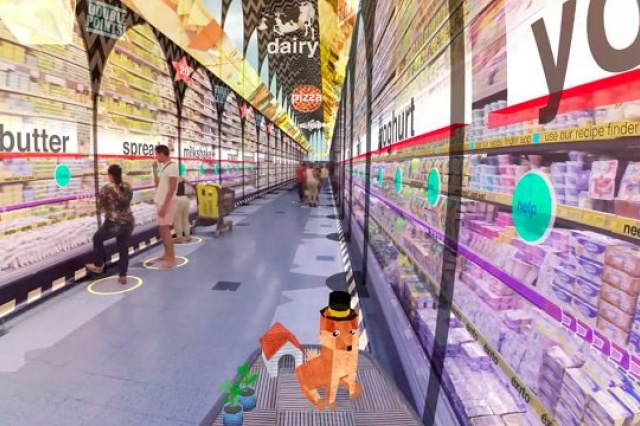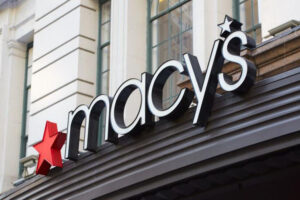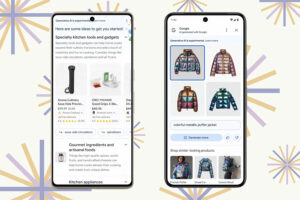Cisco talks virtual reality and customer experience in retail
Leading retailers are exploring innovative ways to leverage these technologies to transform the customer experience and increase sales — and they’re seeing promising results.
By combining AR technologies with the consumer insights and context gained from analytics, retailers can transform the in-store shopping experience, providing hyper-relevant and personalized recommendations in real-time, right within the shopper’s field of view.
For example, while retailers have long been excited about the use of beacons to push messages to customers’ mobile phones, these technologies have had only limited success. Most shoppers don’t want to be interrupted or have to dismiss irrelevant messages when their hands are full. AR promises to overcome the limitations of push notifications by integrating relevant information more seamlessly into the shopping experience.
AR can serve as a personal shopping assistant, highlighting items of interest based upon the customer’s past purchases, or presenting recommendations and special offers right within their field of view as they look around the store. Imagine, for example, a person with diabetes or a food allergy being able to hold their smartphone in front of their field of view as they look down the grocery store aisles and have an AR app highlight the specific products that fit within their dietary restrictions. Retailers can also use AR as an interactive way-finding tool, helping shoppers navigate through a large store to find the exact item they’re looking for, or driving foot traffic to departments they might not have otherwise visited.
Likewise, virtual reality immerses the shopper in rich new retail experiences. The three-dimensional, interactive worlds of VR enable consumers to experience products, environments or events they otherwise would not have.
Lowes has developed a VR environment called Holoroom to help customers design and envision their kitchen or bath remodeling projects. Customers can step into the Holoroom and experience a virtual re-creation of their remodeled kitchen or bathroom to see what the finished project would look like and to select from myriad alternatives they might not have been aware of, widening selection and eliminating guesswork.
Fashion retailers like Tommy Hilfiger are using VR and live streaming technologies to create engaging in-store experiences such as virtual fashion shows that allow shoppers to feel as if they’re in the front row at the runway, then browse the store immediately afterwards to purchase the items they just saw. These types of immersive, interactive experiences foster greater engagement with customers and increase loyalty. And by using VR, the retailer can scale live events in a way not previously possible.
VR technology can help retailers achieve economies of scale in other ways as well. In an era where large retailers are closing stores and shifting to smaller footprints, VR is a cost-effective way to showcase more within a smaller space.
One of our partners, VadaBing, specializes in creating virtual reality solutions for the retail industry. They have been working with one retailer to create a dedicated space within the department store where shoppers can wear a VR headset and walk through an entire virtual home decorated with the home goods and furnishings sold by that retailer. Shoppers can experience variations on each room in the home, seeing how different décor and items from the store’s catalogue can come together to create a beautiful living space.
Using VR, the retailer is able to showcase many more of their items in a smaller footprint and present it all in a realistic, immersive setting the shopper can interact with. Early results have shown that sales per square meter can increase as much as 10-fold when retailers use VR experiences like these.
Similarly, a leading office furniture retailer that VadaBing works with is experimenting with VR to create a virtual “endless aisle” concept. Because they can only fit a small number of office chairs on the floor, they have been unable to show customers the full breadth of their product line. Using VR headsets in the store, they can show customers all the most compelling options and even bring remote experts into the VR session to help answer questions or up-sell products. With superior realism and virtual experts available on demand, this type of VR endless aisle approach could be a game-changer for many segments of retail.
Lastly, VR can be a cost-effective way to reach new customer segments or launch branded concept stores. Imagine placing a VR “store” within an airport, a waiting room or other non-traditional locations. Apparel manufacturers can create VR concept stores much more affordably than opening a branded brick and mortar concept store and can set up shop anywhere — including the millions of living rooms where consumer VR systems will soon be installed, free of charge!
As their popularity continues to grow, AR and VR are poised to become future pillars of customer experience in retail. They will serve as important tools for creating greater customer engagement and personalization, enabling retailers to create immersive, endless aisle environments and driving sales.




